Spiritfarer offers a unique blend of emotional storytelling and gameplay that challenges players to navigate themes of loss. The game emphasizes character relationships, exploring personal stories and emotional growth. Key exploration mechanics enhance player engagement and discovery, while the impact of character departures deepens the narrative experience. Together, these elements create a rich environment for reflection and connection.

How do character relationships shape the narrative in Spiritfarer?
Character relationships in Spiritfarer significantly shape the narrative by highlighting themes of loss and connection. Each character embodies unique stories and emotions that players explore through interactions. As players build relationships with spirits, they experience personal growth and understand the complexities of grief. The exploration mechanics encourage players to engage deeply with each character’s background, enhancing the emotional weight of the narrative. This dynamic interplay between relationships and gameplay mechanics creates a rich, immersive storytelling experience that resonates with players.
What are the key character dynamics in the game?
The key character dynamics in Spiritfarer revolve around relationships shaped by themes of loss and exploration. Characters interact deeply, reflecting emotional connections and personal stories. The player navigates these dynamics through dialogue and actions, impacting character development. Each spirit has unique attributes, such as their past experiences and desires, which influence gameplay and narrative outcomes. The exploration mechanics allow players to uncover these relationships while managing the spirits’ needs, enhancing the overall experience of companionship and farewell.
How do relationships evolve throughout gameplay?
Relationships in Spiritfarer evolve through player interactions and character development. As players progress, they deepen connections with spirits by fulfilling their needs and exploring their backstories. This dynamic fosters emotional growth and highlights themes of loss and acceptance. Players experience a unique attribute of each character’s journey, revealing how relationships shift in response to gameplay choices. Interaction mechanics, such as dialogue and gift-giving, further enhance these evolving relationships, making them integral to the overall narrative experience.
Which characters embody themes of loss and acceptance?
Characters in Spiritfarer that embody themes of loss and acceptance include Charon, Stella, and Giovanni. These characters navigate their own grief while helping others transition to the afterlife. Charon represents the acceptance of death as part of life, while Stella’s journey illustrates personal loss and the importance of letting go. Giovanni, with his backstory, highlights the struggle of accepting one’s past and moving forward. Each character’s relationship with loss contributes uniquely to the game’s overarching themes.
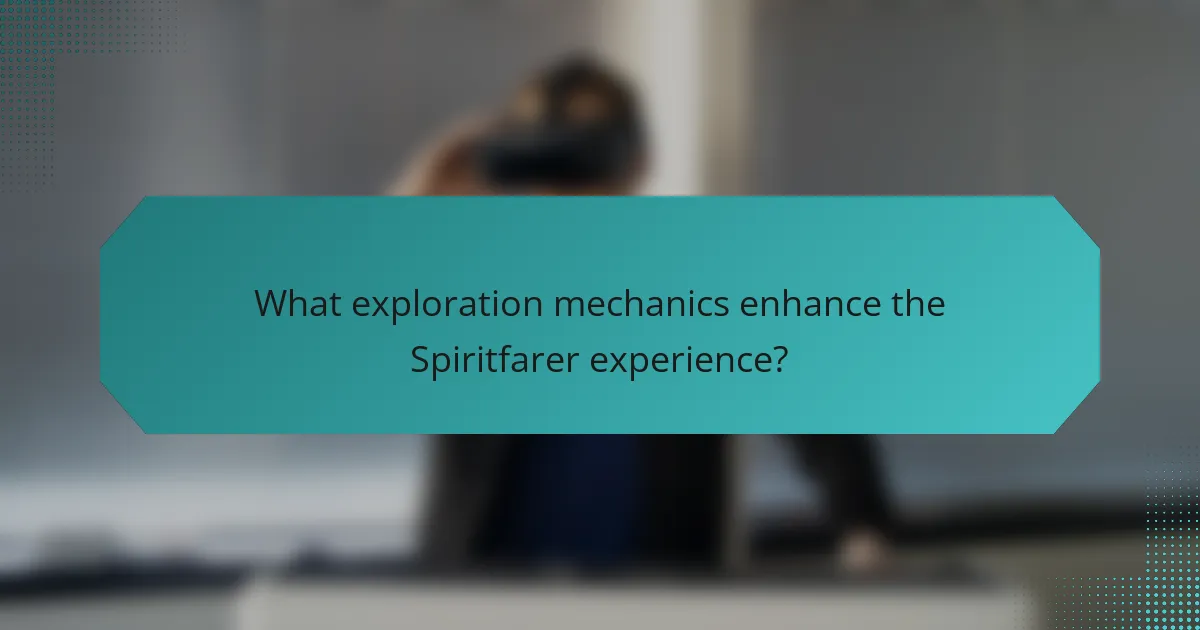
What exploration mechanics enhance the Spiritfarer experience?
Exploration mechanics in Spiritfarer significantly enhance the gameplay experience by fostering emotional connections and discovery. Key mechanics include sailing, resource gathering, and island exploration, which allow players to interact with the world and its characters. Sailing provides a sense of freedom, while resource gathering supports character development and ship upgrades. Island exploration reveals unique stories and hidden treasures, deepening the themes of loss and connection. These elements create a rich, immersive environment that encourages players to engage with the narrative and form meaningful relationships.
How does resource management impact exploration?
Resource management significantly enhances exploration in Spiritfarer by enabling players to gather materials and upgrade their ship. Efficient resource allocation allows for the expansion of the vessel, unlocking new areas and interactions with characters. As players manage resources, they develop deeper relationships with spirits, which in turn influences exploration outcomes. This interconnectedness between resource management and exploration mechanics enriches the overall gameplay experience.
What role does ship customization play in gameplay?
Ship customization significantly enhances gameplay in Spiritfarer by allowing players to personalize their vessel, impacting exploration and character interactions. Customization options, such as upgrading ship parts and adding facilities, deepen the gameplay experience. Players can optimize their ship for resource collection or improve comfort for spirit passengers. Unique attributes like aesthetic choices also reflect personal playstyles. This customization fosters emotional connections with characters, as the ship becomes a shared space for memories and growth.
Which environments are most significant for character interactions?
The most significant environments for character interactions in Spiritfarer include the boat, various islands, and the Everdoor. The boat serves as the central hub for relationships, where players engage in conversations and activities with spirits. Islands provide unique settings for exploration and character development, allowing players to uncover backstories. The Everdoor symbolizes the final farewell, enhancing themes of loss and connection.
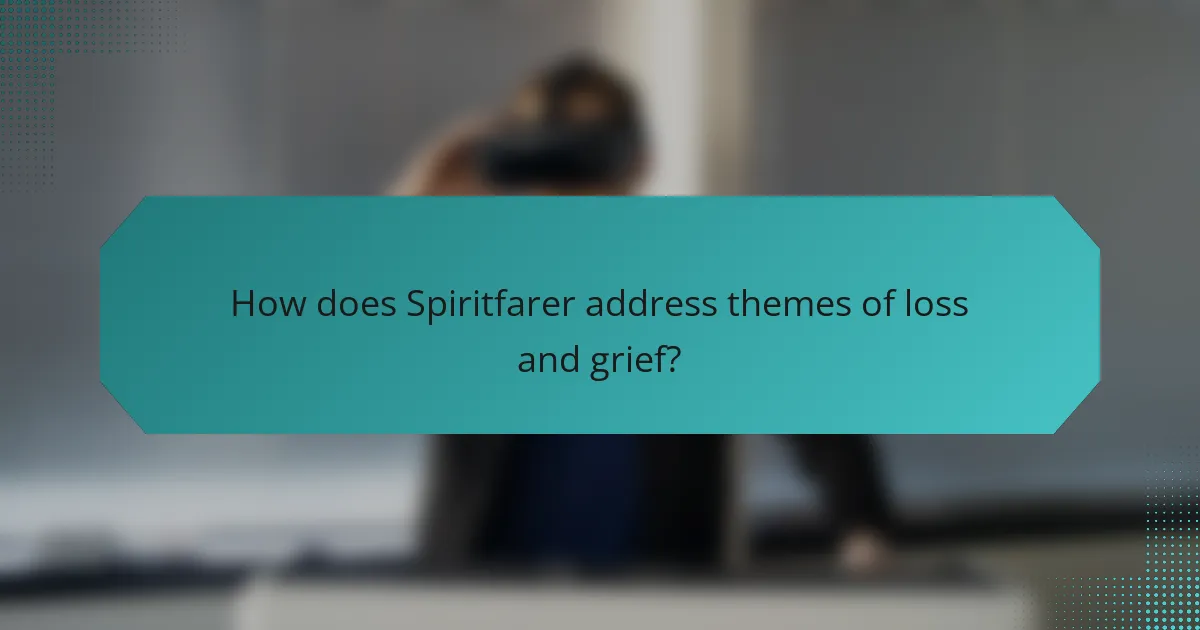
How does Spiritfarer address themes of loss and grief?
Spiritfarer effectively addresses themes of loss and grief through its character relationships and gameplay mechanics. The game allows players to build deep connections with spirit characters, each representing different aspects of loss. As players explore the world, they engage in meaningful conversations that reflect the emotions tied to grief. The unique attribute of crafting and customizing the boat symbolizes the journey of acceptance and healing. Additionally, the rare attribute of farewell moments provides poignant closure, reinforcing the emotional weight of letting go.
What narrative techniques are used to convey emotional depth?
Spiritfarer employs various narrative techniques to convey emotional depth, including character-driven storytelling, visual symbolism, and poignant dialogue. Character relationships are central, showcasing personal growth and connection. Exploration mechanics allow players to engage with themes of loss through meaningful interactions and environmental storytelling. The use of music enhances emotional resonance, creating a reflective atmosphere that deepens the player’s experience. These elements combine to evoke empathy and understanding, making the themes of loss impactful.
How does gameplay facilitate coping with loss?
Gameplay in Spiritfarer facilitates coping with loss by allowing players to engage in meaningful character relationships and explore themes of grief. The game emphasizes emotional connections through interactions with spirits, each representing different aspects of loss. Players help these spirits move on, creating a sense of closure and acceptance. Additionally, exploration mechanics encourage players to reflect on personal experiences of loss while navigating the game’s beautiful world. This blend of narrative and gameplay fosters a therapeutic experience, promoting healing through empathy and understanding.
Which cultural perspectives on loss are reflected in the game?
“Spiritfarer” reflects diverse cultural perspectives on loss through its character interactions and narrative depth. The game emphasizes the importance of closure, honoring memories, and the journey of letting go. Different characters embody unique cultural attitudes toward death, showcasing rituals and beliefs that vary across backgrounds. For instance, some characters express grief through storytelling, while others focus on celebration of life, highlighting how culture shapes individual experiences of loss. This rich tapestry of perspectives invites players to engage with their own feelings about mortality and remembrance.
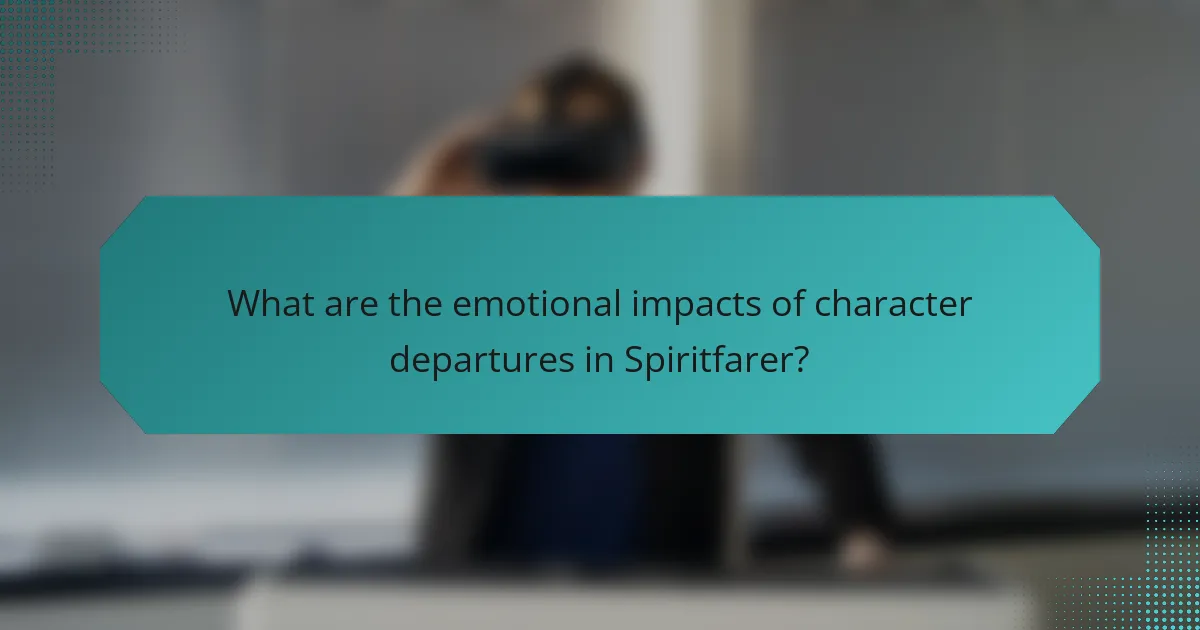
What are the emotional impacts of character departures in Spiritfarer?
The emotional impacts of character departures in Spiritfarer are profound and multifaceted. Players experience a deep sense of loss as they form connections with characters, highlighting themes of grief and acceptance. Each departure evokes emotional responses, prompting players to reflect on their relationships and the nature of farewells. This interaction fosters empathy and encourages players to process their feelings about loss, enhancing the overall narrative experience. The unique attribute of Spiritfarer lies in its ability to transform the act of saying goodbye into a meaningful journey of emotional growth.
How do players typically respond to character endings?
Players typically respond to character endings in Spiritfarer with a mix of emotional reflection and narrative closure. The game’s themes of loss resonate deeply, prompting players to contemplate the relationships formed throughout the journey. Many express feelings of sadness as they bid farewell to characters, highlighting the unique bonds created during gameplay. The exploration mechanics enhance this experience, allowing players to engage with each character’s backstory, which adds depth to their eventual departures. As a result, endings often evoke a sense of fulfillment despite the underlying sorrow, emphasizing the game’s poignant exploration of acceptance and letting go.
What lessons about life and death can be learned from the game?
Spiritfarer teaches profound lessons about life and death through its character relationships and themes of loss. Players experience the emotional weight of farewells, emphasizing the importance of cherishing connections. The exploration mechanics allow for reflection on mortality, showing that life is a journey of acceptance and letting go. Engaging with characters reveals unique stories that highlight individual experiences of grief and healing, reinforcing the idea that love endures beyond death.
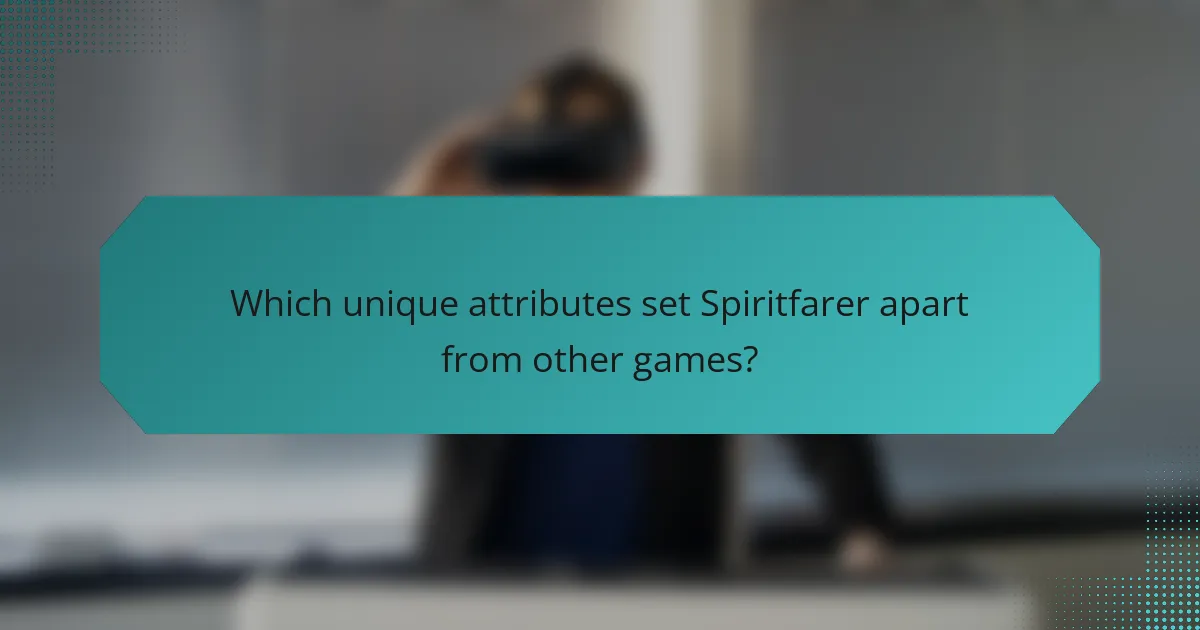
Which unique attributes set Spiritfarer apart from other games?
Spiritfarer stands out due to its unique blend of emotional storytelling, character relationships, and exploration mechanics. The game emphasizes themes of loss and acceptance, inviting players to engage deeply with characters as they help them transition to the afterlife. Its hand-drawn art style and soothing soundtrack enhance the immersive experience, creating a tranquil atmosphere. Additionally, the cooperative gameplay allows for shared experiences, making it distinct in the indie game landscape.
How does the art style contribute to the game’s themes?
The art style in Spiritfarer enhances the game’s themes of loss and connection through its vibrant visuals and emotional character designs. The hand-drawn aesthetic creates a warm, inviting atmosphere that contrasts with the heavy subject matter. Unique attributes of the art style include the use of color to represent emotions, with brighter hues symbolizing joy and darker tones reflecting sorrow. This visual representation deepens the player’s understanding of character relationships, as each spirit’s design embodies their backstory and struggles. The exploration mechanics are intertwined with the art, as players navigate beautifully crafted environments that evoke feelings of nostalgia and reflection, reinforcing the game’s central themes.
What innovative mechanics are exclusive to Spiritfarer?
Spiritfarer features innovative mechanics such as spirit management, emotional storytelling, and resource gathering. Players build relationships with spirits through unique interactions, enhancing exploration and personal growth. The game’s approach to loss is profound, using these mechanics to convey themes of farewell and acceptance. Each spirit offers distinct quests and abilities, enriching gameplay and narrative depth.
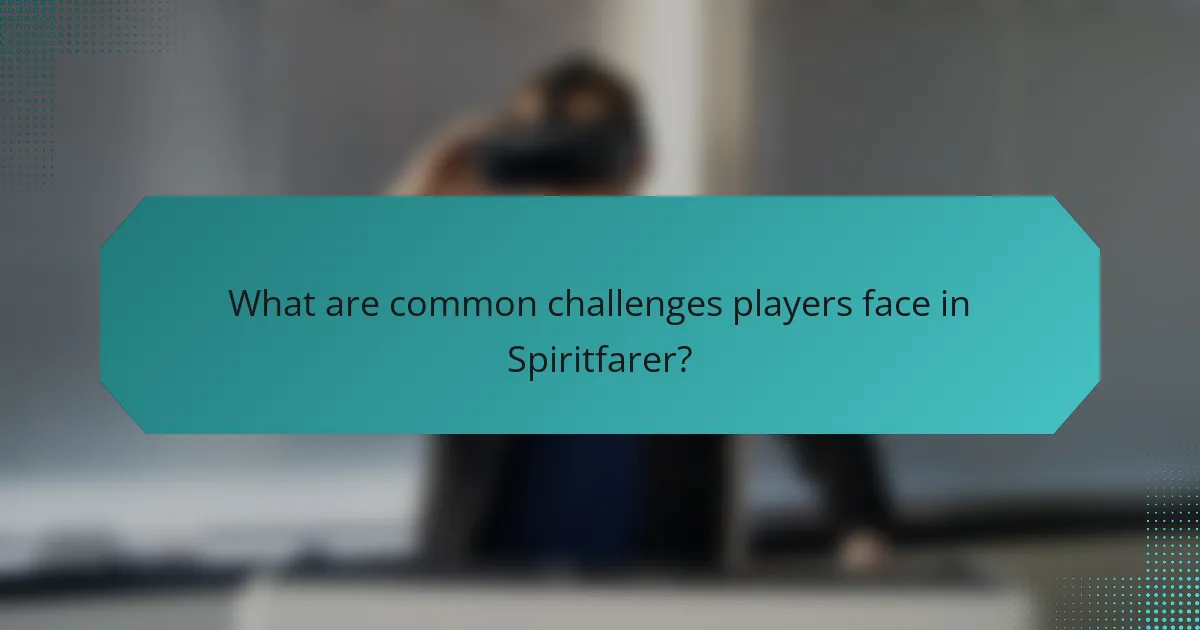
What are common challenges players face in Spiritfarer?
Players in Spiritfarer commonly face challenges related to managing character relationships, resource gathering, and navigating themes of loss. Balancing the emotional connections with spirits can be complex, as each character has unique needs and backstories. Resource gathering involves exploring various islands, which can be time-consuming and requires strategic planning. Additionally, the overarching theme of loss presents emotional challenges, as players must come to terms with the departure of spirits they have helped. These elements combine to create a rich but challenging gameplay experience.
How can players effectively manage their time and resources?
Players can effectively manage their time and resources in Spiritfarer by prioritizing tasks and balancing exploration with character interactions. Focus on completing quests that enhance relationships, as these yield valuable rewards. Allocate time for gathering materials and upgrading the boat, ensuring progress in the game’s mechanics. Regularly check in with spirits to maintain connections and unlock new abilities. This strategy fosters a deeper understanding of the game’s themes of loss and acceptance.
What strategies can help navigate emotional moments in the game?
To navigate emotional moments in Spiritfarer, players can utilize several strategies. First, engage deeply with character stories to foster empathy. This enhances emotional connections and understanding. Second, take breaks during intense scenes to process feelings. This prevents overwhelm and allows for reflection. Third, use exploration as a means to distract and find comfort in the game’s beautiful environments. Lastly, embrace the themes of loss and acceptance, which are central to the game, to better cope with emotional challenges. These strategies can enhance the overall experience and provide a supportive framework for navigating difficult moments.
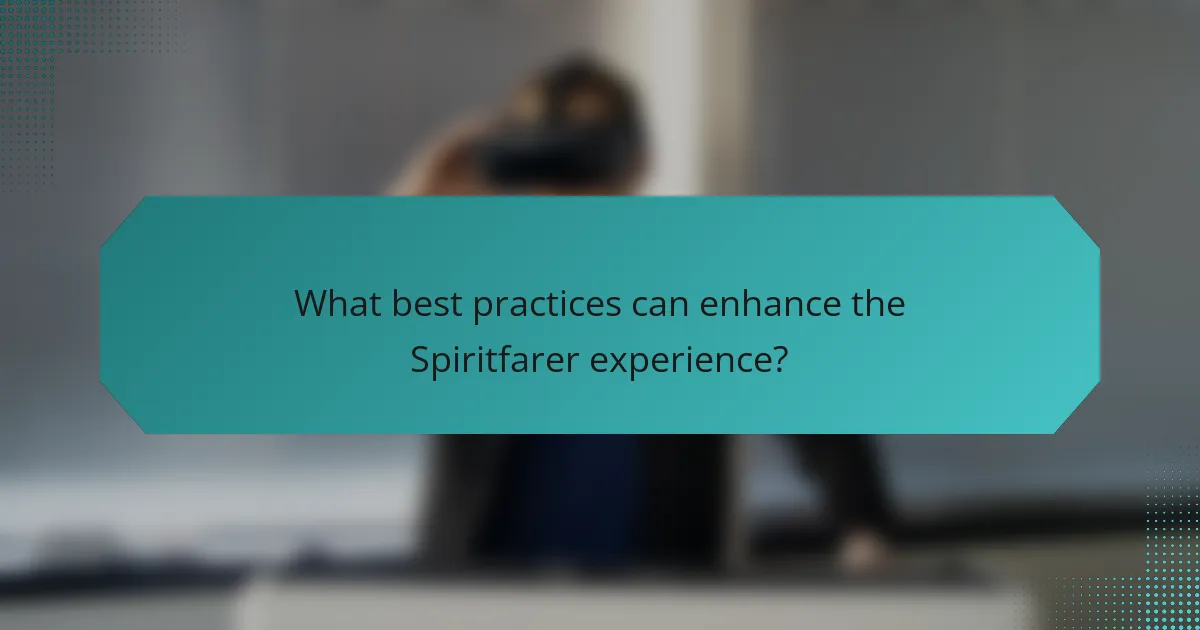
What best practices can enhance the Spiritfarer experience?
To enhance the Spiritfarer experience, focus on building deep character relationships, exploring diverse environments, and embracing themes of loss. Engaging with each character’s story fosters emotional connections. Exploring the world unlocks resources and new experiences, enriching gameplay. Acknowledging loss adds depth, encouraging reflection and personal growth.
How can players maximize their character interactions?
Players can maximize character interactions by engaging deeply with each spirit’s personal story and fulfilling their requests. Focus on exploring the world to uncover new dialogue options and gifts that strengthen relationships.
Prioritize completing tasks for spirits to unlock unique interactions. For example, cooking their favorite meals or crafting items they desire enhances emotional connections. Additionally, spending quality time with spirits during activities like fishing or gardening fosters deeper bonds and reveals hidden narratives.
Utilize the exploration mechanics to discover new areas and resources, which can lead to more meaningful interactions. Each location often holds memories that resonate with the spirits, enriching the overall experience of loss and connection in Spiritfarer.
What tips are essential for successful exploration and resource gathering?
Successful exploration and resource gathering in Spiritfarer requires strategic planning and attention to character relationships. Prioritize visiting islands with specific resources. Engage with spirits to unlock new abilities and gather materials. Utilize the boat’s upgrades to enhance exploration efficiency. Always manage your time effectively to balance resource gathering with character interactions.